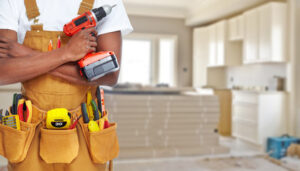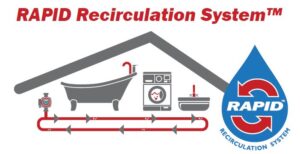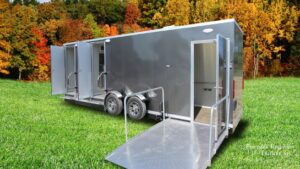A handyman is a general repair and maintenance professional. Other names for this career include repair person and fixer-upper.

Over time, regular activities in homes can cause fixtures to break. Replacing these items can be a tricky DIY project for some homeowners.
Having an experienced professional on-call can save you valuable time and money. To help the pro complete your job faster, prepare your space ahead of time.
There are a lot of moving parts in running a facility. As a result, minor issues can get lost in the shuffle. When this happens, a facility may not be able to keep up with necessary building maintenance and repairs.
This is where a handyman comes in. Handymen are jacks-of-all-trades and can take on a broad range of general projects that a contractor would typically oversee. However, there are limitations to what a jack-of-all-trades can do legally in each state. Contractors must be licensed in order to perform construction jobs that require a higher level of expertise.
A facilities manager can save a significant amount of time and money by working with a single handyman company to handle multiple small maintenance tasks. The streamlined process makes it easier to track individual vendor performance and quality of work. The fact that facilities management companies tend to work with these vendors repeatedly also allows them to better separate the wheat from the chaff in terms of quality, professionalism and reliability.
When it comes to building maintenance, a jack-of-all-trades is an invaluable resource. This is because they can complete a variety of tasks that other contractors simply cannot or choose not to do. These include basic carpentry, painting, and electrical work.
These minor tasks can add up over time and cause big problems down the line if not handled properly. By hiring a jack-of-all-trades, you can keep your facility in tip-top shape and avoid larger maintenance issues down the road.
If you are the owner of a commercial property, maintaining your facilities is a top priority. A clean, well-maintained facility is a key part of the customer experience and helps drive sales. However, it can be difficult to find the time and energy to take care of every small task that needs to be addressed.
Rather than letting these minor issues linger, hire a professional handyman to help you tackle them. This will allow you to focus on running your business without having to worry about the little things that can easily turn into bigger problems if not addressed immediately.
Fixing the Floors
Over time, regular use of a home’s floors can cause them to become damaged. From scuff marks from shoes to dents from furniture, these small problems can make a room look old and worn out. Handymen can often help to fix these issues. If the damage is too significant, they may recommend a more specialized professional.
Flooring can also be one of the most expensive projects for a homeowner to take on. A handyman can be hired to lay new tile or replace the surface of an existing floor. This can be a relatively simple job for someone with the right skills, or it could involve tearing up the current floor and replacing all of the framing underneath. In some cases, this type of work requires a licensed plumber or carpenter.
Another common flooring job for a handyman is the repair or replacement of bathroom or kitchen fixtures. These can include faucets, sinks, cabinets, and lighting fixtures. These types of jobs usually do not require a licensed professional, but if the fixture is older or damaged, it may be beneficial to hire one.
Handymen are also often asked to assemble furniture. Although many people do not find this to be an exciting or relaxing task, it is a service that most handymen are willing to provide. Some handymen can be found working for furniture assembly services, which typically list their prices and locations on the internet.
Other handymen choose to be self employed and work on a contract basis, either at individual homes or commercial facilities. They can also be found working for a large national or international maintenance and repair service company. In this case, the handyman will be assigned to a specific geographic area and will be expected to answer calls from customers in that region.
Handymen may be required to obtain bonding and insurance as part of their employment. This is generally to protect themselves against claims made by customers if they are unable to complete the job or cause damage to the property. These requirements are also usually set by the employer, but can vary from business to business.
Fixing the Plumbing
Handymen have the skills to fix things like a broken toilet handle, dripping faucet or faulty electrical outlet. They also know how to make small repairs and maintenance tasks that you might not be able to do on your own, such as caulking, grouting, painting or installing new door knobs. This allows you to focus on other areas of your home or business that may need attention.
Many people in this role have backgrounds in a particular trade or have learned their skills on the job. Others are retired from other professions or have chosen to pursue this type of work in order to supplement their income. Some are self-employed or employed by a company that needs help with maintenance on its facilities.
Often, handymen are required to do work outside or at heights. They might be called to assess a roof, for example, or they might need to climb a ladder to get into an attic. They might also have to do work in basements or crawl spaces.
Most handymen do not need any specific training or education to perform their duties, but they should be competent at basic tools and have the ability to follow instructions for more complex tasks. A good handyman will always be honest about what types of work are beyond their skill set, and recommend a specialist to complete the work safely.
A typical handyman will be bonded and insured, as this helps to protect both the customer and the worker. This can include coverage for property damage and bodily injury. It is important for anyone who works on customer’s property, especially those with high-value jobs or large amounts of cash stored at the site, to carry insurance and be bonded.
In addition to general liability, some handymen choose to obtain specialized coverage such as professional liability and general business interruption insurance. This will protect them against unexpected costs and loss of revenue while they are working on a project.
There are a number of benefits to working as a handyman, and it is an ideal option for those who want to stay in the workforce but do not have the time or expertise to take on a full-time career in a particular trade. It is a great way to stay active and earn extra money, while still having the freedom to enjoy your personal life outside of work.
Electrical Repairs
Handymen typically have knowledge of basic electrical wiring and can help homeowners with a variety of different electrical repair jobs. For example, a handyman can replace light fixtures or switches, run wires between rooms for TVs or other electronics, and even rewire homes with outdated wiring. They can also help with safety-related tasks like replacing faulty outlets or GFCI plugs, which can be dangerous if not handled properly.
Another common electrical repair job that a handyman can complete is installing or replacing smoke detectors and carbon monoxide detectors. These safety devices are crucial for protecting a home, and it is important to have them working correctly. A handyman can help with this by ensuring that the detectors are mounted correctly and that all wires are connected properly. They can also check that the batteries are fresh and that they are replaced on a regular basis.
Adding to this list of electrical repairs, a handyman can also help with repairing or replacing a blown fuse. Replacing a fuse requires some basic electrical work, but it is something that can be done quickly by an experienced handyman. For more complex electrical repairs, such as rewiring a home or fixing a circuit breaker, it is best to contact an electrician.
A handyman can also offer services that help with general home maintenance, such as washing windows and staining wood furniture. This can be a great way to keep up with routine maintenance and prevent damage from accumulating over time. Handymen can even handle more advanced paint and staining projects, such as stripping old wallpaper or refinishing a deck.
There are many other types of odd jobs and home repairs that a handyman can do. To make the most of your marketing efforts, it is important to focus on the ones that align with your skillset and that are unique to your area of expertise. For example, offering babyproofing or aging-in-place upgrades can give you a competitive advantage and help you win more jobs.
Now that you have a list of potential handyman services, it’s time to start building your marketing plan. You can use this list as a reference each time you price and quote a new job, or import it into your software to instantly add these services to a quote, job, or invoice.




